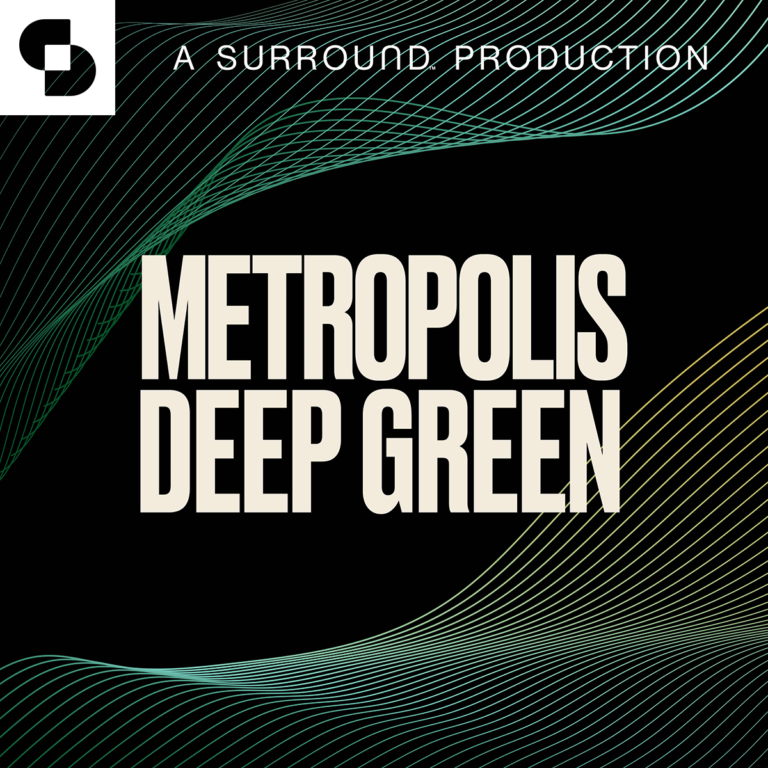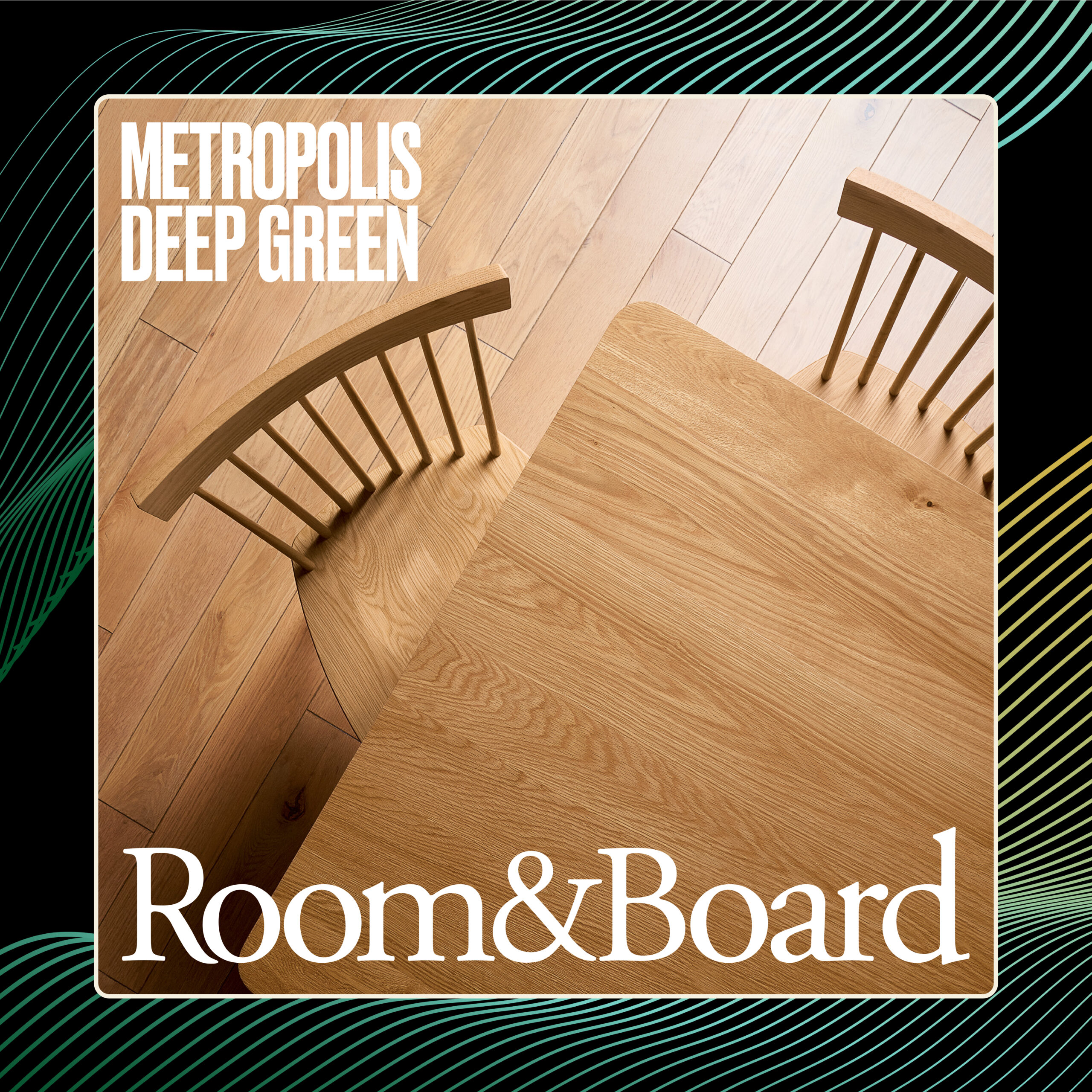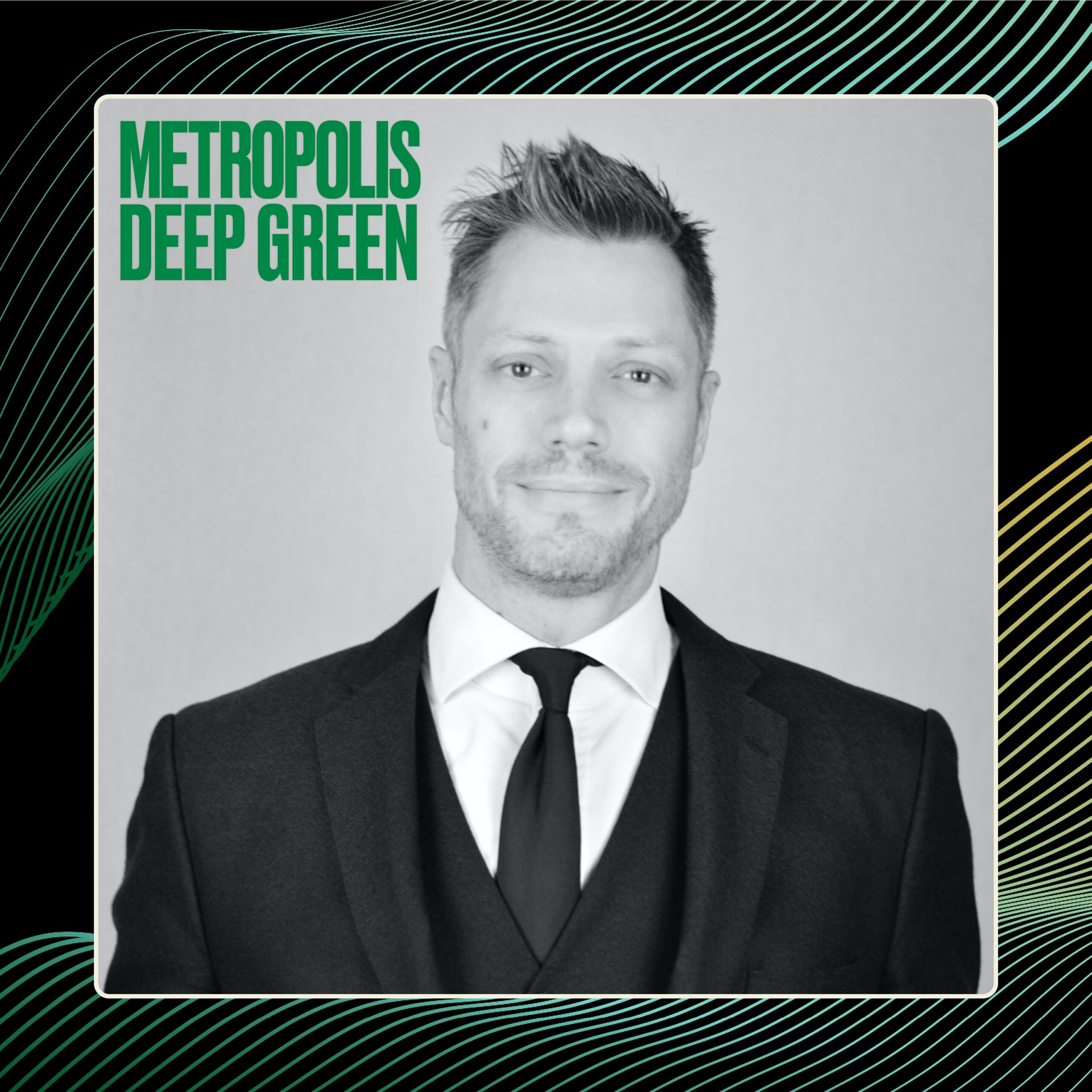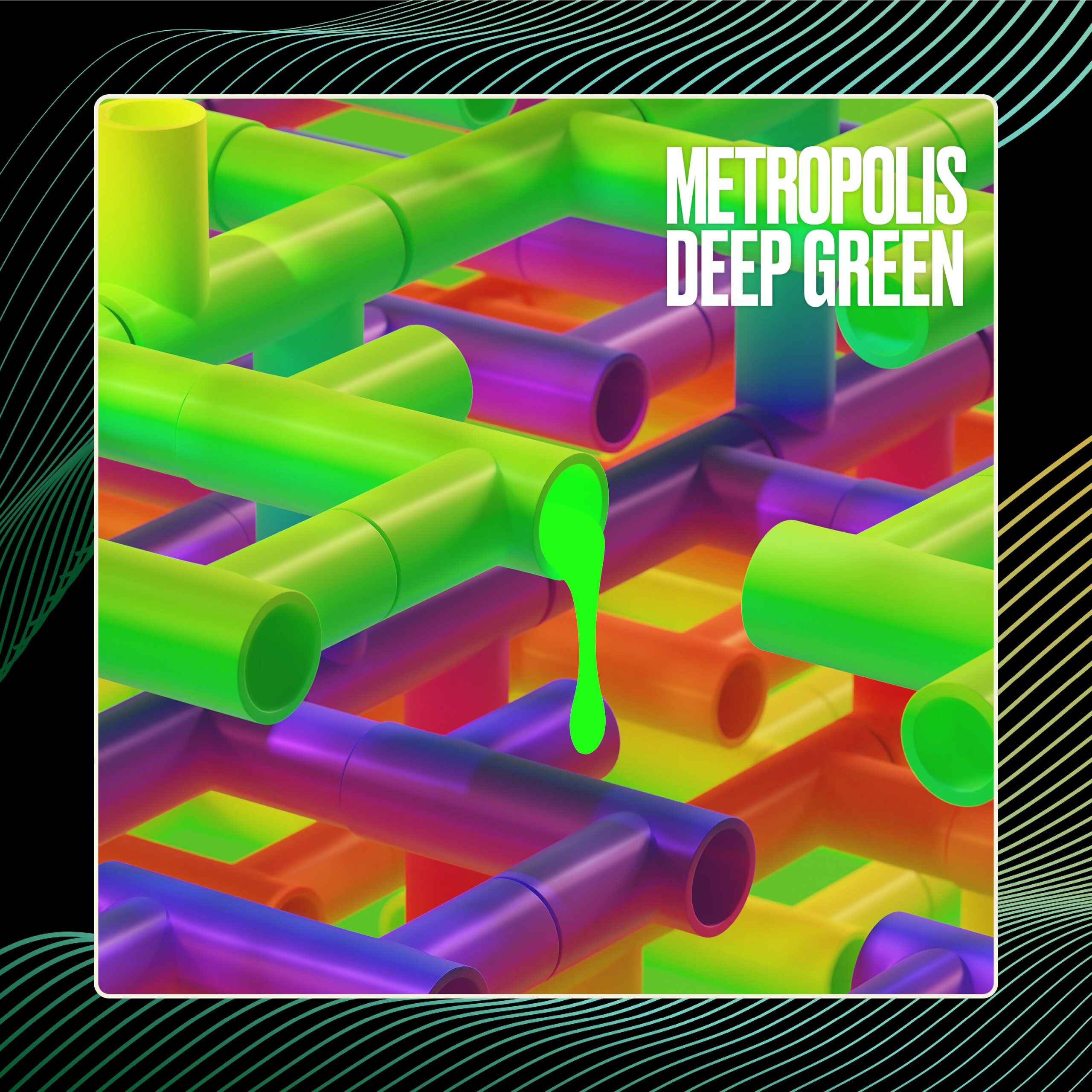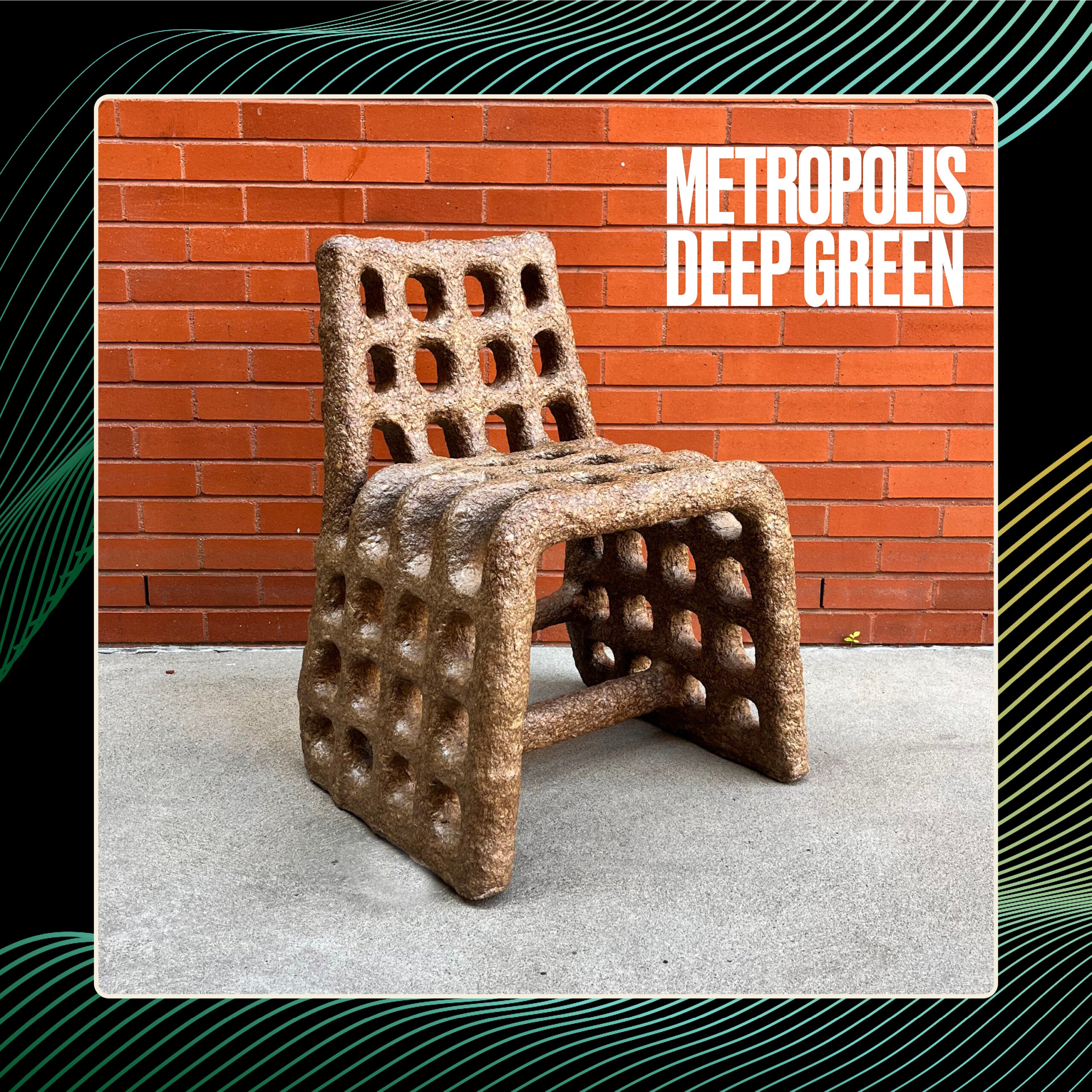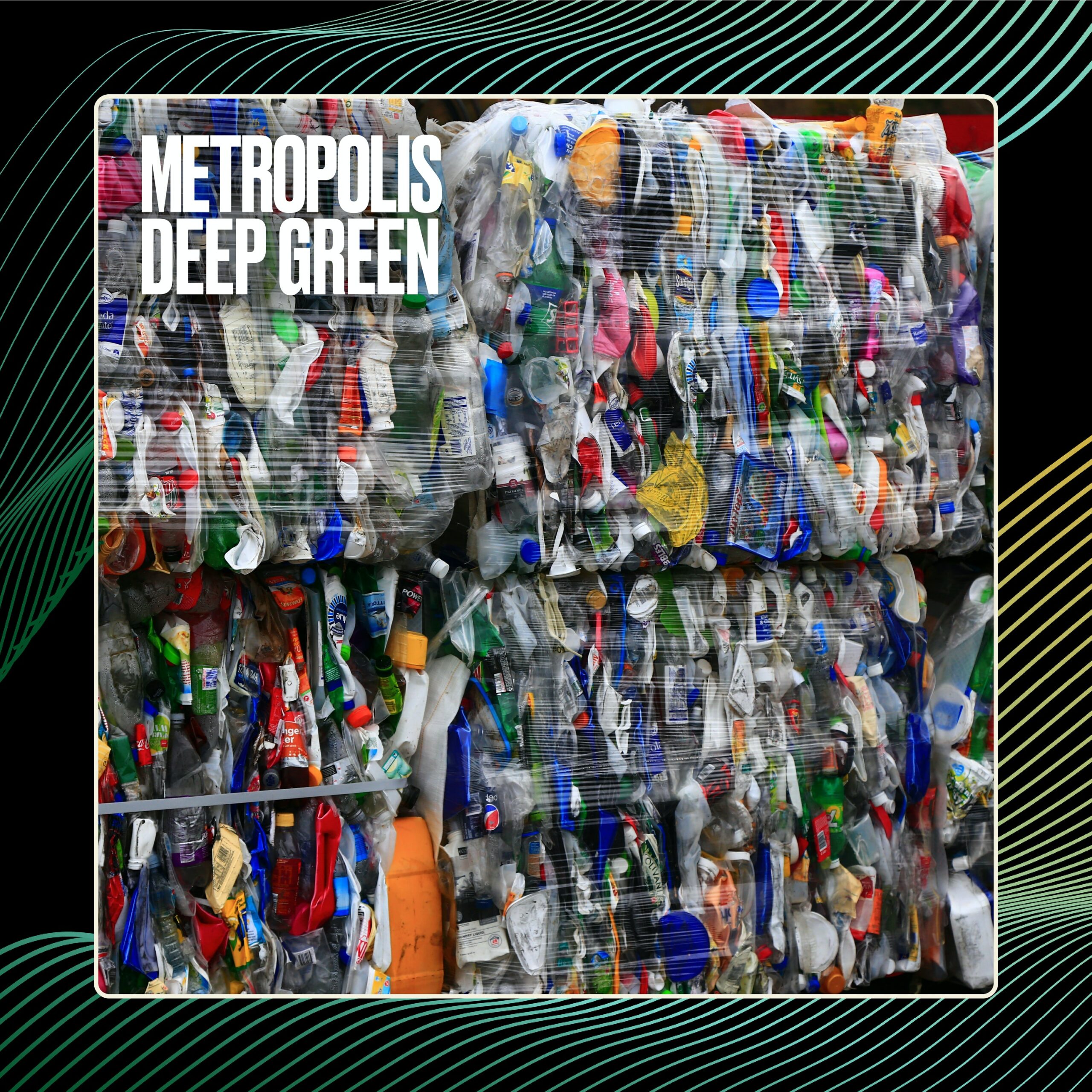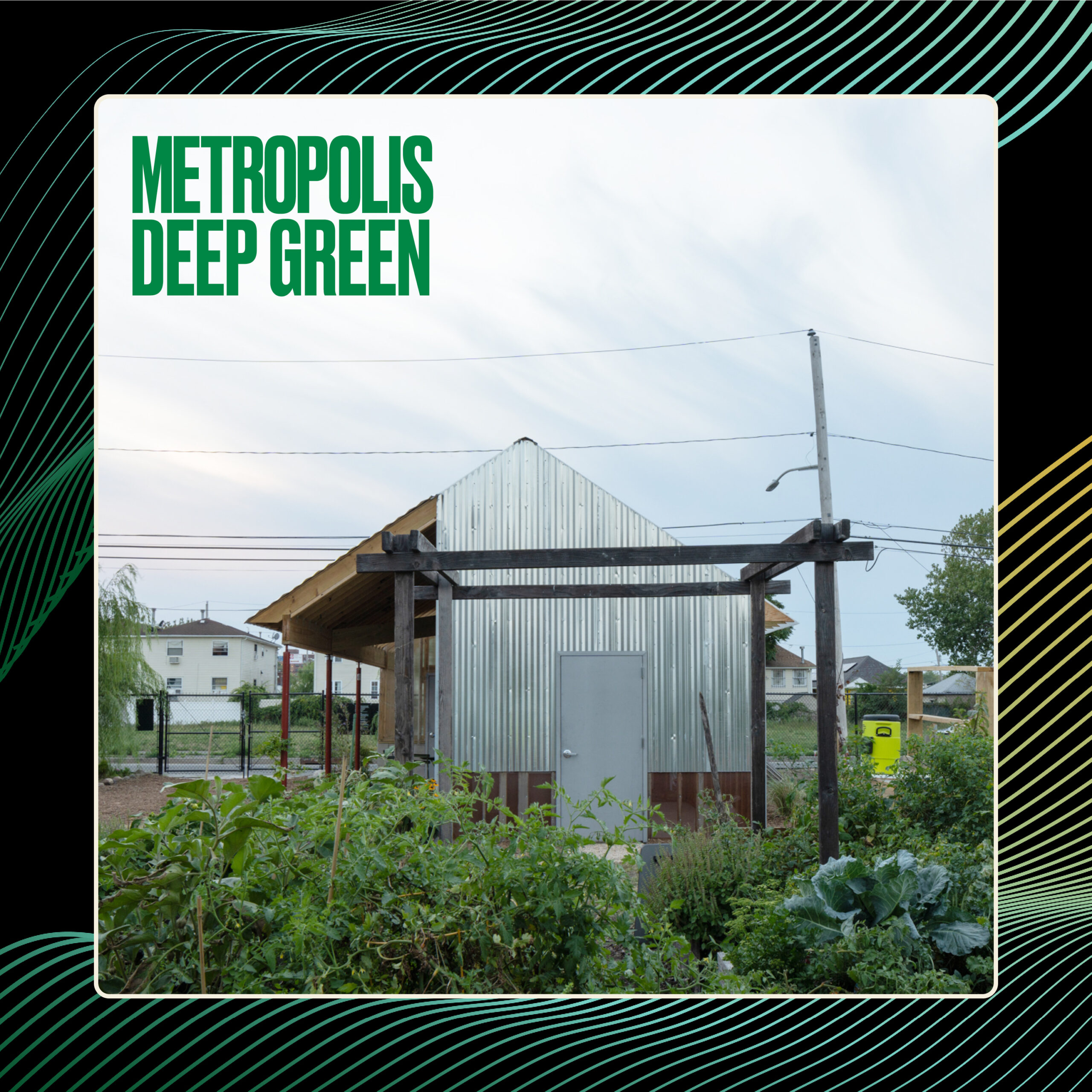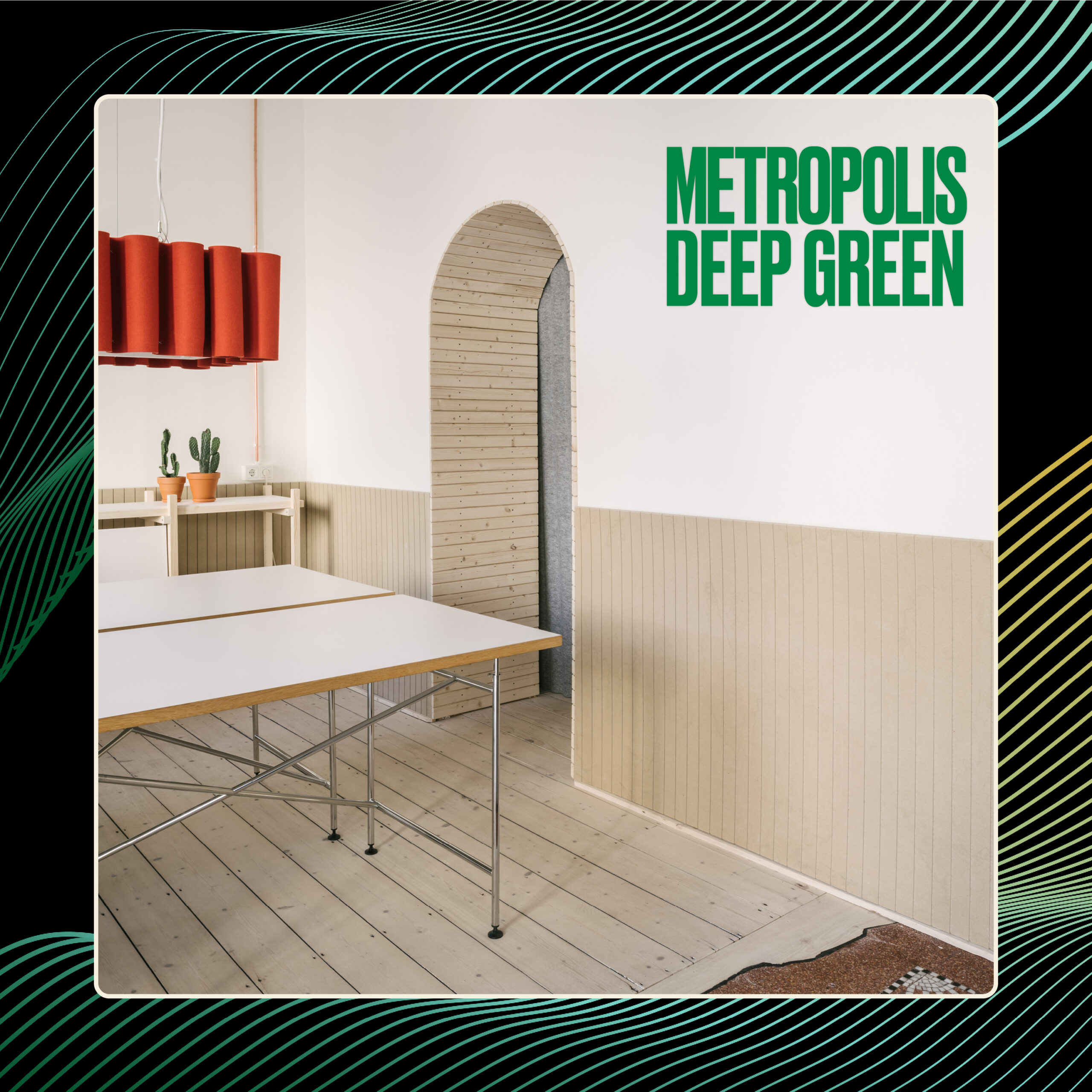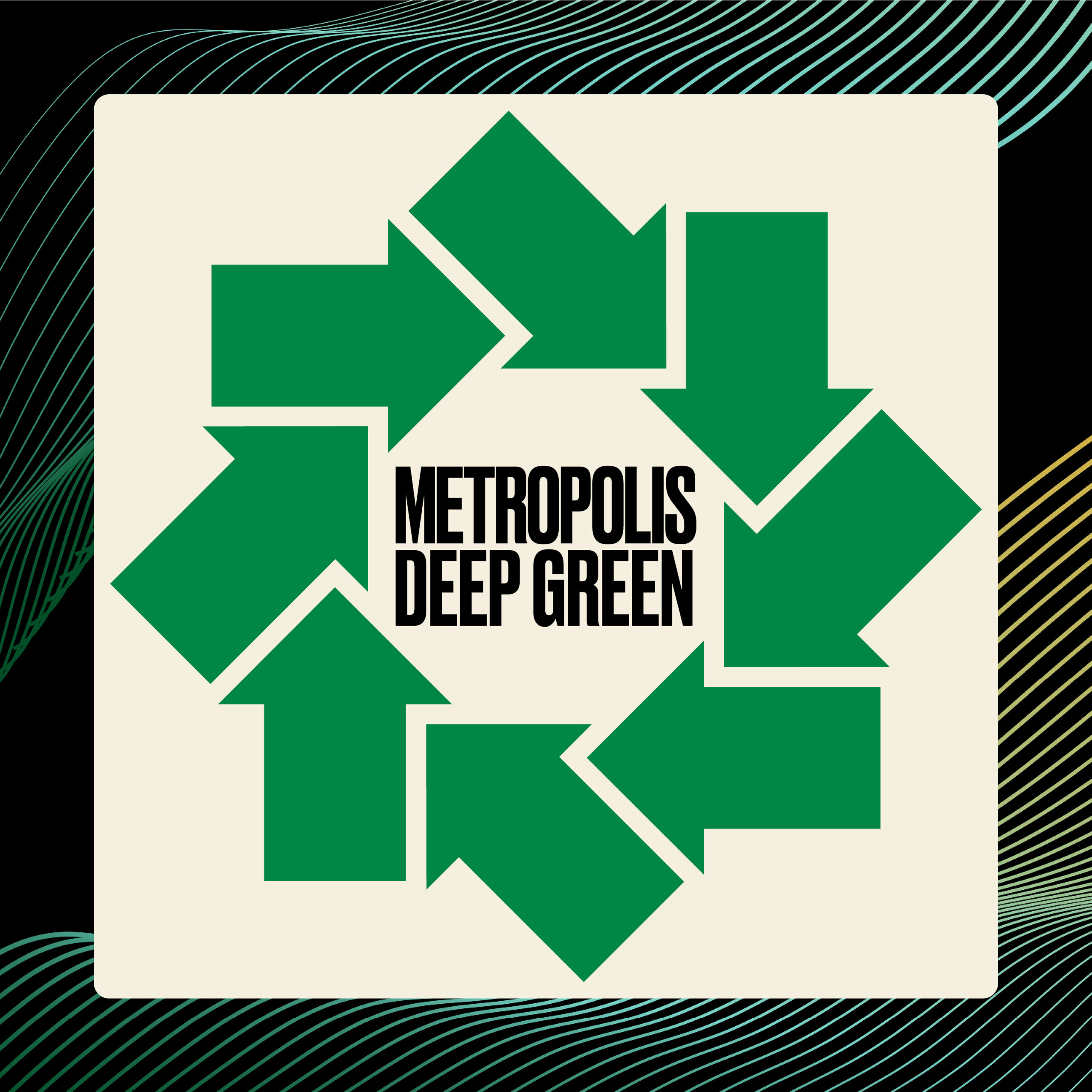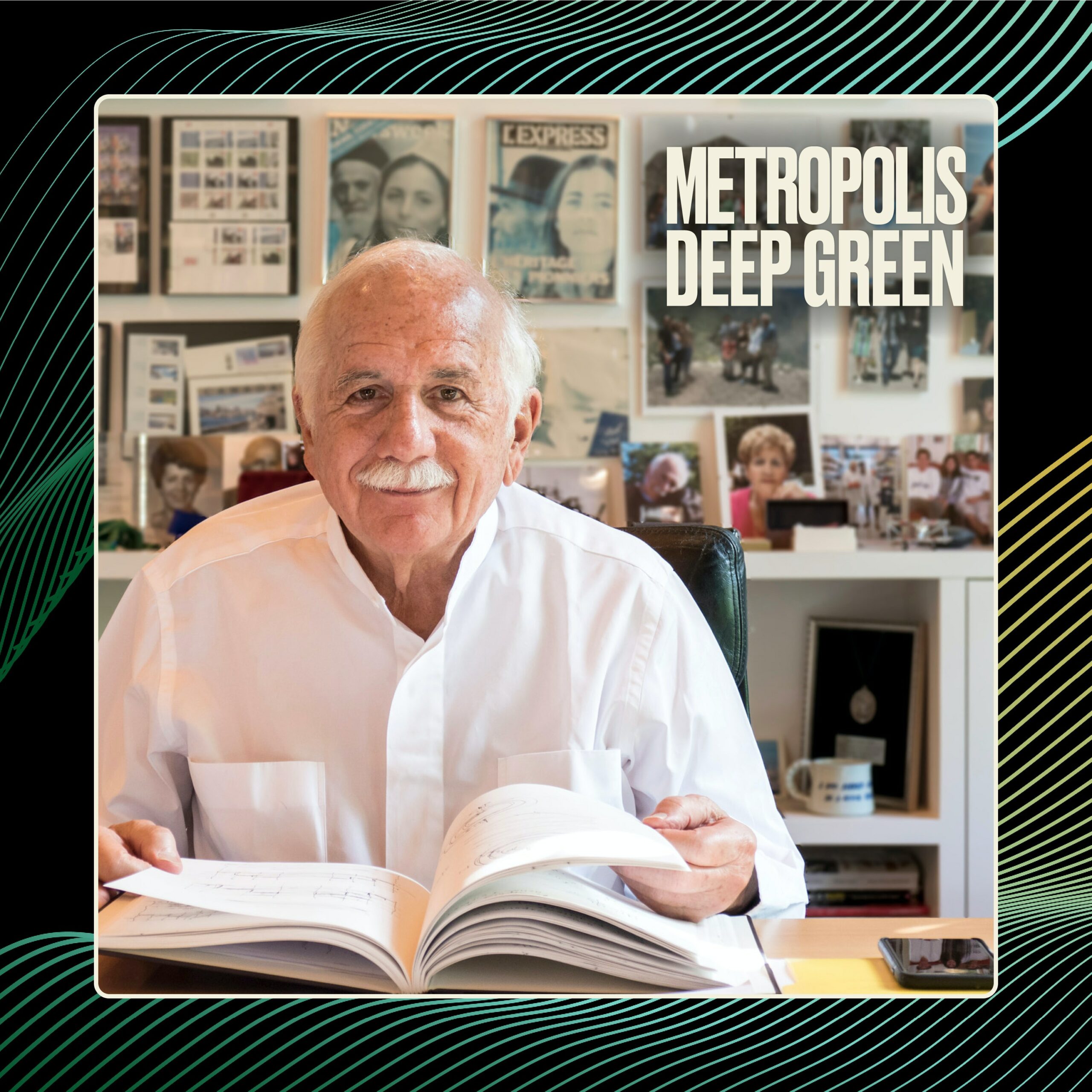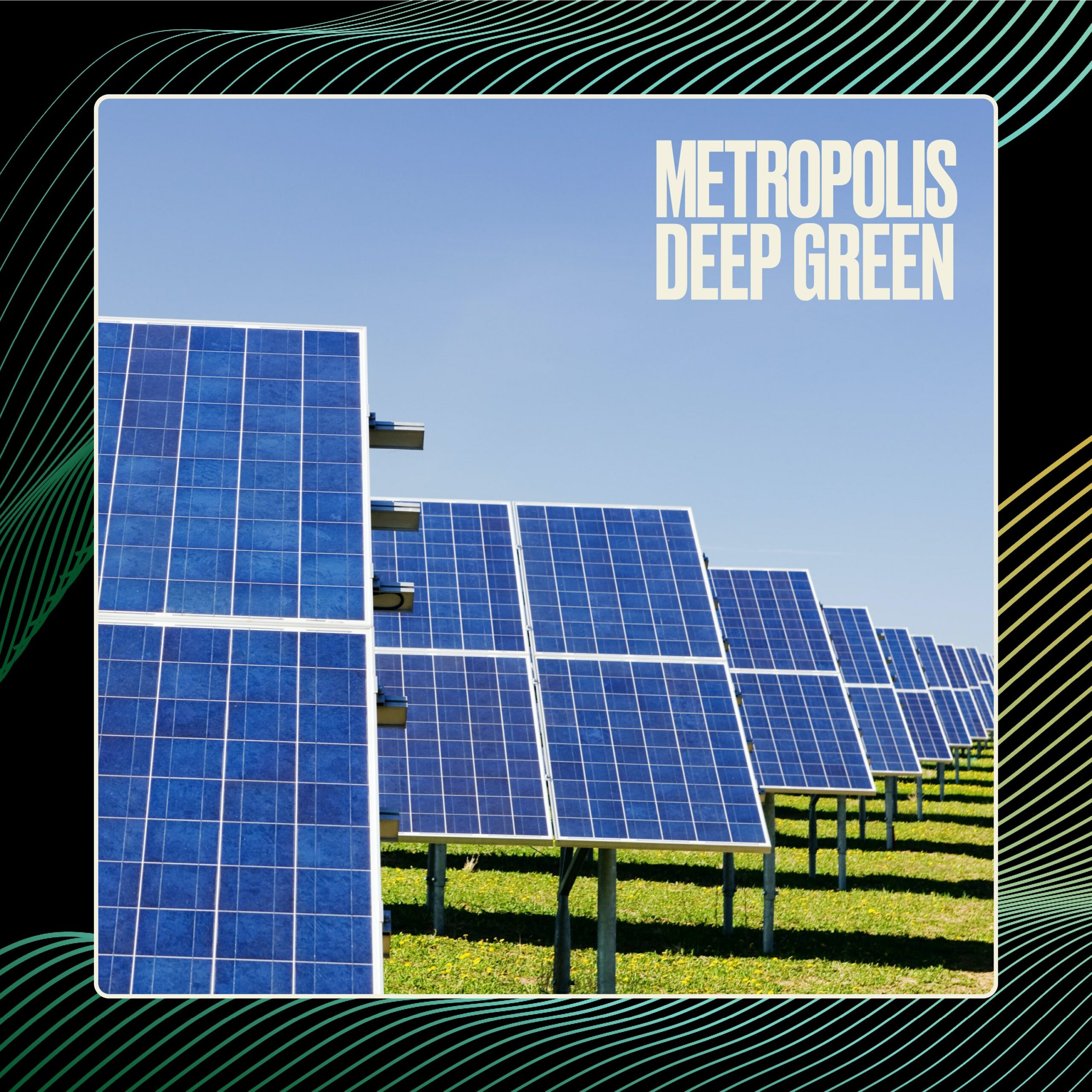When we think about the carbon emissions of buildings so far we’ve focused largely on two things: the emissions involved in operating the buildings and those involved in the building materials and construction. But there’s a third piece that we’ve largely overlooked, which is all the stuff inside the buildings: furniture, carpet, the lights, the seats. All that stuff puts greenhouse gases in the air when it’s made, when it’s transported, installed, and eventually discarded.
Now consider a company like Salesforce, which designs and develops enterprise software and operates 59 offices around the world. Every time one of those offices is renovated, it means carbon emissions, which is a problem for a company that’s committed to sustainable practices. But through some consistent efforts, Salesforce has been chipping away at the carbon emissions of its workplaces.
In this episode, brought to you in partnership with Interface, we discuss those efforts with Amanda von Almen, senior manager of sustainability and head of sustainable business environments at Salesforce, and Lisa Conway, vice president of sustainability, Americas, at Interface, who supplies all of the flooring solutions at Salesforce—and explore why workplaces are really an important factor in the fight against climate change.
Connect with Metropolis:
Instagram: @metropolismag
Facebook: facebook.com/MetropolisMag/
Deep Green is a production of SANDOW Design Group.
This episode is Sponsored by:

[00:00:00] Avi: Welcome to Deep Green, a biweekly show about how the built environment impacts climate change and equity. Deep Green is brought to you by metropolis. I’m your host. Avi Rajagopal buildings are some of the biggest things we make as human beings. So if you want to know how we can do better for the environment and for all life on this.
[00:00:29] Avi: You have to understand buildings and cities and all the things that go into them. And that’s what we want to help you with here at Deep Green today’s episode is brought to you in partnership with interface.
[00:00:48] Avi: 2022 is a strange year to be talking about offices. I know, but nonetheless, we have to talk about offices today because it turns out that workplaces are a new frontier in the fight against climate change. So let me explain you see, when we think about the carbon emissions of buildings so far, we’ve focused largely on two.
[00:01:10] Avi: The first is the emissions involved in operating the buildings that is in keeping the lights on keeping the AC running, you know, all the stuff that’s reflected in the utility though. The second piece we’ve usually focused on is the emissions involved in the building materials in construction, you know, All that concrete and steel and glass, but there’s a third piece that we’ve largely overlooked, which is all the stuff that’s inside.
[00:01:35] Avi: Buildings, furniture, the carpet, the lights, the seats, all that stuff puts greenhouse gases in the air when it’s made, when it’s transported installed, and eventually discarded, you know, the time when the building is built, when it’s brand new. That stuff contributes to about 7% of the building’s carbon emissions, somewhere in that [00:02:00] range, that can seem small in comparison to say concrete, which in some buildings can be like 40% of the building’s carbon emissions, but here’s the thing that concrete isn’t going anywhere.
[00:02:14] Avi: Once the building is built, but the interiors, they get refreshed or renovated every few years, every time a company decide. Its offices are outdated or when one company moves out and another one moves into the space, all that churn, you know, all that furniture and lighting and flooring, all that stuff is being taken out and put in every few years.
[00:02:38] Avi: And that means the emissions add up. It can eventually add up to equal the emissions involved in constructing the structure and the envelope of building. Now consider a company like Salesforce. Designs and develops enterprise software and employs some 69,000 people around the world in 59 offices. And every time one of those offices is renovated, it means carbon emissions.
[00:03:06] Avi: Now this is a problem for a company that’s committed to sustainable practices and to actually delivering a carbon neutral cloud computing solutions to thousands of its clients, businesses all around the. So through some really consistent efforts, Salesforce has actually been chipping away at the carbon emissions of its workplaces.
[00:03:27] Avi: They’ve been building out all of its offices to the minimum standard of lead gold certification from the us green building construction and trying to get all major future office innovations to zero carbon emissions as certified by the international living future Institute. Today on deep brain, we’re gonna talk to two people.
[00:03:46] Avi: Who’ve been an integral part of that effort. We have Amanda Juan Elman, who is the senior manager of sustainability and the head of sustainable business environments at Salesforce [00:04:00] and Lisa Conway. Who’s the VP of sustainability. America’s at interface. It supplies all the flooring solutions for Salesforce.
[00:04:10] Avi: Today we’re gonna discuss why workplaces are really an important factor in the fight against climate change. Welcome Amanda and Lisa, thank you so much for joining us today. Amanda, I’d like to start with you. Tell us a little bit about your role at Salesforce. It’s a pretty unique role, and also tell us why the company decided to focus on the built environment on buildings, its real estate portfolio, as part of its sustainability effort.
[00:04:38] Amanda : Absolutely. Yeah, it is a unique role, but it’s, it’s my dream job. Awesome. I’ve been at, at Salesforce for a little over six years in this role. And, and really it started with, you know, our commitment to sustainability. For many years, Salesforce has known that it’s business is the greatest platform for change, and we really need to use our voice for good.
[00:04:58] Amanda : And so making sure that we’re aware of our, of our environmental footprint. So it started, you know, like in many sustainability teams, uh, and companies very small, really. Took stock of what, where our carbon emissions are coming from, where, as you mentioned earlier, you know, we’re a cloud computing company.
[00:05:16] Amanda : And so our emissions look maybe different from consumer packaged goods and other organizations that make physical products. And so we took stock. What does our footprint look like? Where are our biggest source of emissions? And. Next to data centers, it’s it’s offices. That’s the next thing that really makes up a large part of our carbon emissions.
[00:05:37] Amanda : So it seems natural of course, to focus our attention on there and to really make sure we had dedicated attention to that. And so then that’s where I came in. it was lucky enough to come into the organization and really get to focus on that. Working with our. Absolutely fantastic. Uh, real estate and workplace services team who from the very beginning was so open to it and just really wanted to dive in there [00:06:00] very little, if any hesitation. And we really wanted to make sure that if we were gonna do it, we were gonna do it. Right. And so that started with really fantastic partnerships with, with interface and Lisa here. So I’ve had the pleasure of getting to know her for many years and, and many other parts of really breaking apart what, what come, what are the source of emissions that are actually part of our offices?
[00:06:21] Avi: I think that’s the amazing part about, you know, your team being ready to dive into this. It’s actually quite a new insight for our industry. You know, we don’t often think about interior design in this way as being sort of such an important frontier in fighting climate change. And we certainly haven’t thought about, you know, office design as such a, such a big part of the company’s commitment to carbon neutrality. And so I’m sure there was also a lot of just learning along the way and sort of a step by step discovery of even how one gets there. I’d love to talk about the, your two big commitments, you know, to healthy materials and to zero-carbon certification. Can you talk about, you know, what gave you the confidence to make those commitments and how you’ve been working towards them so far?
[00:07:11] Amanda : Yeah. Yeah. It’s definitely been a learning process. Right? The more you dive in, the more you realize you, you don’t know as much as you thought. Right. and so I, I think the great, the great thing about our whole entire team and the real estate team is we, we always went into it with a learner’s mindset and what are we gonna discover here and not being afraid of what we might discover.
[00:07:30] Amanda : Right. I think that’s a really important bit and. A really important thing too, is again, you have to not only look at your source of emissions, but then when you drill that down into real estate, what does your real estate profile look like? We don’t own any buildings except for one, we largely lease our a hundred plus offices around the world. And so that is a lot of commercial interiors, right. A lot of fit outs. And at the time when I started around six years ago, we really started to streamline.
[00:07:56] Avi: You know, what’s really incredible about your team diving right in is [00:08:00] that, you know, This was actually new territory for all of us. I, I don’t think we’ve understood for very long that interior design and workplaces in particular have such a big role to play in the fight against climate change. So I’m sure, you know, making these commitments that you have has been a process of discovery, and I’d love to hear about that. You know, what gave you the confidence to make a commitment to healthy material? And to zero carbon certification in your spaces and, and how have you been working towards it?
[00:08:33] Amanda : Yeah, absolutely. It’s definitely been a discovery period. We’ve, we’ve learned a lot on the journey and, and the more you dive in the, really the real you realize the less you know about what’s going on. And so we went in with this real learner’s mindset of. What are we gonna find out where are our, where can we have impact and where can we have the maximum amount of influence?
[00:08:53] Amanda : And so the first thing is really looking at our building portfolio. The we, a lot of people see the Salesforce logo on buildings all around the world, and that’s great, but the truth is we don’t own. Many, if any of those buildings, except for one in San Francisco, we are largely a majority tenant or sometimes just, a few floors in a building.
[00:09:10] Amanda : And so our impact really is coming from commercial interiors. And as you said, right, the, the life cycle of commercial interiors is very short. And so when you start to really look at that, not just in the immediate, but over the long term, you realize there’s a significant impact there. And there’s a lot.
[00:09:29] Amanda : Work still to be done in the commercial interior space. You, you mentioned in the intro that, you know, embodied carbon had largely focused on core and shell. And so we found it as a, as a great opportunity to focus on our impact areas and where we could really have that influence. And so we dove on in, we started looking at the embodied carbon of materials and when we started looking at the embodied carbon of materials, like anything, it snowballs, and we really started to dive into healthy materials and realizing that there is a lot of really scary [00:10:00] chemicals and stuff that are associated with building materials. And we’re really committed to our employees and our customers and anybody who walks through our doors. And we wanted to make sure that when you walked into any Salesforce space around the world, that it really embodied our values, sustainability, equality, trust, right, customer success, these things that are really important to us. And we, we couldn’t know that there. Chemicals of concern, but just focus on carbon, right? Like we knew too much at that point. Right. And I have this really fantastic design team that. Really got ignited by this idea that we can not only reduce the carbon impact of our products, but at the same time, we can improve the, the, the health of these products as well.
[00:10:42] Amanda : And the people that are gonna be regularly interacting with them. So that was really the birth of our healthy and sustainable materials program, which was this holistic viewpoint, looking at carbon, looking at the suppliers that we work with, looking at the different ingredients that have come in the products, and then looking at things like circularity, what is the end of.
[00:10:59] Amanda : Of this product and where does it go and how do we make sure it doesn’t end up in a landfill. And then again, looking at social attributes for the different suppliers we work with, if we’re gonna work with them globally and spend a lot of money with them, we wanna make sure that there’s values alignment there, right?
[00:11:12] Amanda : That they care about equality and environmental justice and these things that are so near dear to us. So. That then became the framework as part of this larger program. And then again, to keep ourselves and everyone honest, I do think it’s important to utilize third party certification, right? I think if we’re all March marching towards different goals, we’re not really helping here and we need to be, have more alignment.
[00:11:34] Amanda : So for us, it was just starting doing lead certification, as simple as it may sound. Doing consistent regular lead certification is, is a really big effort. You gotta get everyone on board. You have to agree. We’re gonna spend this money, cuz there’s economies of scale that when you do lead certification in smaller spaces, it tends to cost more than if you do it in larger spaces.
[00:11:55] Amanda : So we really set ourselves that we’re just gonna get in this habit. We’re gonna lead certified a minimum goal [00:12:00] level. We’ve actually never received less than a gold level certification than any of our spaces. And then increasingly started to pursue lead platinum, especially for all of our being in the larger spaces.
[00:12:12] Avi: Lisa I’d like to bring you in here. You know, of course, you know, as organizations like Salesforce begin to understand, you know, the impact of their real estate portfolio of their commercial offices. You know, they, they need partners. Who’ve kind of already been on that track. And luckily for Salesforce interface is one of the first product manufacturers to start to talk about carbon neutrality within interiors.
[00:12:40] Avi: And it’s also opportune because of course makes sense. When you think about it, every, you know, most of the. Square footage of an office has to have some kind of flooring solution. And so that means that flooring ends up being, you know, even by volume, you one of the most important, um, products to be specified in a workplace. And so, you know, tell us a little bit about interfaces journey towards carbon neutrality and how you’ve been working with organizations like Salesforce.
[00:13:13] Lisa : One of the most exciting things actually in the past may, just handful of years, is that people have actually started to care about the carbon footprint just started to, you know, sales forces is obviously kind of the tip of the spear.
[00:13:29] Lisa : We’ve had the lowest carbon footprint product for 25 years. The issue is that no one cared. Right? So now that everyone is, I think really emerging, especially from the pandemic, just really. Wanting to do as much as humanly possible and are more open to additional lenses for material selection. It’s really boating well, for those of us that have been on this journey.
[00:13:52] Lisa : So Salesforce, you know, I, Amanda, I’m, she’s probably happy that she didn’t have to go in the direction [00:14:00] of her design team fell in love with something else. And then she had. Come in with her healthy materials and carbon program and be like, Ooh, you’re gonna have to reselect. You know, there was already grateful progress with some other.
[00:14:15] Lisa : Great design initiatives that were important to Salesforce, like biophilic design and like performance. And of course, you know, price and availability, let’s be real. All of that comes into play. But with this additional criteria, they were already on the right track and they could continue some of the selections that they had made anyway.
[00:14:33] Lisa : So with other customers, you know, I think that they’re just starting to use this lens as part of their decision making criteria. So like Salesforce, other customers of ours are starting to include embodied carbon as part of their decision making criteria. Like Salesforce manufacturers have to do a hotspot analysis as well.
[00:14:58] Lisa : So when Salesforce was looking at their office spaces, they did an assessment and had to see like, where is the major carbon impact coming from? Manufacturers do that as well. So when we do a life cycle analysis for our products, what we find in the carpet world is that it’s actually the nylon, the nylon faces the primary driver of carbon impact in, in carpet products.
[00:15:23] Lisa : So. What we’ve done is move to an almost entirely recycled content nylon that brings down the carbon footprint of our product a lot. And other manufacturers of other products will, you know, they’ll find their hot spots and those are kind of the first to address. So it’s kind of actually a similar approach for both of us, even though we’re, we’re different, one’s a manufacturer.
[00:15:46] Lisa : And, and one we’re talking about in offices here, but really finding those drivers and addressing them. Especially to your point a there’s a lot of quantity of flooring, you know, if you think of your surfaces and then corporate office, you know, furniture can be a [00:16:00] big driver as well, you know, that really bodes well for doing that analysis and, and finding those, those hotspots and addressing those first and foremost.
[00:16:11] Avi: Yeah. You know, I think our journey towards. You know, net zero and carbon neutrality in buildings and in spaces in general has been that journey of finding the hotspots and then discovering more and more errors where we can push forward. Just as you know, we focused first, as I said, on how electricity buildings consume and we’ve been steadily chipping away at that and now we have more renewable sources of energy and more places in the country and that’s getting better. We’ve also made our buildings more efficient and so on. And then when you look at interiors than we have to be like, where in interiors? You know, where are the carbon emissions? And then flooring is one of them furnitures the other, as you said, and then within flooring, you know, it’s like, okay, now in the flooring product, You know, in a carpet tile, you know, where’s the, where’s the big carbon emissions. And so I, you know, it’s just, it’s amazing that journey of just chipping away at the next bigger piece of the bind and the next bigger piece of the bind and the next bigger piece of the pie. And, you know, that’s how we make progress. Um, You know, just to go back to what you were saying about, you know, Salesforce being ahead of the curve and, and other businesses, just a quick stat here is that at the end of 2019, just before we went into the COVID 19 pandemic, there were about 500 organizations around the world that had committed to carbon neutrality by some date by 20, 40, 20 50, or whatever. As of today, the number stands between 1500 and 2000. And so, you know, there’s been just this rapid acceleration. It’s really important that all of those organizations understand that their real estate portfolio and their is probably for many of them will be a big contributor to their carbon emissions.
[00:17:50] Avi: So for those organizations, Lisa, you described this kind of, you know, hotspot approach, figure out where the biggest piece of the pie is addressed that then the next biggest piece of pie address that [00:18:00] Amanda new, I guess, please look fine. Just that Amanda, in your experience, what has, what is some low hanging food for organizations? Who want to work towards carbon neutrality in their workplaces?
[00:18:12] Amanda : Yeah. I mean, again, you have to really take stock of where you. What does your office look like? Right. There’s furniture, but what kinds of furniture, what kind it’s different depending on the different culture of, of an, of a particular company? I think for us, I think the big thing I would say is first you have to start measuring, right?
[00:18:32] Amanda : Because you’ll be surprised really the things that there was many items once we really started measuring it, that. Really that has that high of an embodied carbon value. Wow. And, and then you realize, oh, that’s actually been notoriously difficult to reduce the embodied carbon. What can we do there? And so I think that you gotta start with measurement because it’s really actually hard to understand what the low hanging fruit is.
[00:18:55] Amanda : A lot of the time until you really have a, a good idea. And then what you start to do is really be able to prioritize. Right. What, what has a high embodied carbon value? Is this a product swap or is this a, we have to work with the manufacturer to. Remove carbon or remove chemicals of concern or is there nothing in the industry that exists, which sometimes that is the answer as well.
[00:19:17] Amanda : And what can we do through policy advocacy or coalitions or partnerships to actually help try to make sure that these products, you know, enter the market, right? So then even once you start doing your hotspot analysis, the approach to which, how you’re going to tackle, it will be very different and we’ll have definite levels of, you know, product swaps.
[00:19:38] Amanda : Are easier than reformulating pro products and, and things like that. So I think it’s just important to really measure, get a very good baseline. We worked really closely. The sustainability team does not make these decisions and vacuum by our, by ourselves. We work very closely with our procurement and our design team, and we really consider ourself a kind of a three prong effort, always [00:20:00] looking at price and availability.
[00:20:02] Amanda : And what was really exciting out of that. And then as well as design and aesthetics and the thing in, in them really trying to make sure that those Salesforce values and culture come through through our real estate. And what was really exciting about it that I didn’t anticipate was that procurement saw it as a great opportunity for them to have impact. Right. And so things like when there was really cool, sustainable products that we wanted to, to start to pilot in our. But actually purchasing them wasn’t as easy as you would think they weren’t as available, right. Or maybe a certain dealer or something didn’t carry them. And so procurement saw that as a fantastic opportunity to use our purchasing power, to bring those products to more availability for others. Right. And. Have the dealer start carrying them or, or, you know, manufacturer make them more available. And so that was a really exciting thing that we didn’t anticipate was they saw their role in it and how we could move all this forward together. And so that’s, that’s how we’ve been focusing the effort overall.
[00:21:00] Avi: So Lisa, on your end, you know, you spoke about discovering for instance, that the nylon face, which is really the surface that we stand on in a carpet is the place where there’s the highest carbon emissions. But I know that, you know, Finding the right solution, even if you know, the hotspot is not always the easiest, um, thing.
[00:21:20] Avi: So on your end, Lisa, what have been some of the challenges, especially as you’ve pushed, pushed past carbon neutrality to, you know, even get to carbon sequestering, carbon attack?
[00:21:31] Lisa : It’s actually, I mean, it’s interesting because it’s the same from a manufacturer’s perspective and Salesforce’s perspective and designers’ perspective, it’s working with suppliers using those relationships that you have to be able to change the industry and you need willing participants.
[00:21:48] Lisa : We aren’t in a position where we can necessarily just. Switch suppliers. You know, we really think that it’s part of our job to move our suppliers, to be able to lower and even sequester carbon. [00:22:00] And then since they’re not only our suppliers, then that really transforms industry that makes those materials available to, to many different manufacturers and can really change the whole footprint of the industry.
[00:22:13] Lisa : So in our case, we worked with primarily two suppliers of nylon and it started with a, with a challenge from our founder, Ray Anderson, really back in the day. And he said, you know, the first of our suppliers to bring. Recycled content nylon gets the majority of our new product development. And that’s really what suppliers are buying for with a company, um, like ours.
[00:22:39] Lisa : So it starts with that challenge, that kind of pilot scale, and it then changes industry. Like now the most of the carpet that Salesforce is buying is a hundred percent recycled content nylon, and that’s made of both pre and post-consumer content. Post-consumer carpet. Post consumer fishing nets, you know, and, and now that fiber, it’s kind of crazy now Pradas using it now it’s part of eco fashion.
[00:23:07] Lisa : So it’s just amazing what can happen when a challenge like Salesforce puts out or like interface puts out or some of these tip of the spear companies that. Yes, our mission driven companies. And we do kind of have that permission to pursue in ways that some companies don’t. I think it’s why Amanda and I would say that we, you know, we work in our dream jobs.
[00:23:28] Lisa : We’re kind of at dream companies where we’re allowed to, to get away with that, but that’s what starts the process. And then when we have a mission like climate takeback, you know, the reversal of global warming. That’s where within a year we saw development around a carbon negative or carbon storing carpet tile, and that’s without offsets.
[00:23:50] Lisa : So when you frame the challenge in a way that sounds impossible, we find that it really unlocks innovation. And now we’re [00:24:00] offering, it’s just a handful of products that are carbon negative, but we have the capability to do it in almost. I mean, the majority of our product portfolio. And over time, that’s where we’re gonna get, not just with carpet tile, but also the rest of our flooring portfolio.
[00:24:14] Lisa : So it’s, it’s super exciting and, you know, can really just show what what’s possible when you partner
[00:24:22] Amanda : And to add to that interface was super smart because, you know, they saw us, you know, we were already partnering with them on, on carpet, but I had kind of just started and we were ramping up our program and.
[00:24:35] Amanda : Building our narrative around our office sustainability program and interface was really smart and went. Here’s the story behind the recycle, you know, the fishing nets and the carpet and things like that, and really started to bring the storytelling aspect of the sustainability rate. Cuz when you start giving people, carbon numbers and things like that, many of their eyes glaze over. Right. And they become disinterested. But like I said, they really came to the table with there’s a, there’s an incredible storytelling element here. And it was a fantastic way for us to. Marge shores, our carbon goals, but bring our employees and our customers and everybody in on the journey of, Hey, you know, this beautiful carpet you walking on.
[00:25:14] Amanda : Well, it’s also made of recycled fishing net and goes to, you know, these great programs and things like that. And, and that really helped change the narrative and make the carbon and sustainability story of our offices, much more accessible to anyone who is in our space. So I give a lot of kudos to them because they.
[00:25:31] Amanda : Really came to me and was like, you should know this about the carpet. You should talk about it. Here’s a cool video. You can share. Here’s some great resources. And now I really ask that of a lot of our suppliers. It’s great. Give the carbon numbers, but what’s the story here. And they really were the, the, the impetus for that as part of our journey as well.
[00:25:49] Lisa : Yeah. People remember stories, not everyone gets quite as excited. Carbon numbers as Amanda and I do. And it’s [00:26:00]
[00:26:00] Amanda : I think it’s cool, but , but you know.
[00:26:02] Avi: That storytelling, that sharing of stories is really how we’re going to get people excited about carbon numbers, right? Buy and buy. And eventually, I mean, we’ve just woken up to the fact that the, the offices that many of us left behind in 2020 are actually an important kind of frontier.
[00:26:21] Avi: Inviting climate change. It’s not something that occurs to us, you know, yet the numbers show the way we build stories around that, just like the two of you’re doing for us today. And it starts to sink in that, you know, we need to be thinking about things in this entirely different way. Um, you know, let’s talk about the changing nature of work today.
[00:26:42] Avi: You know, we are talking about workplace. Are there opportunities in how, you know, hybrid work has, you know, come to stay. Even as I know, many organizations are phasing folks back into their offices or have been for a few months now, but really ramping that up in the us, at least in March, there seems to be, you know, this understanding that even when we are all back in the office and using the offices, there will be some amount of hybrid work.
[00:27:13] Avi: Can you tell us how Amanda that’s figuring into your thinking about de carbonization? Are you seeing any opportunities there? just, is that opening up any new doors for you?
[00:27:26] Amanda : Absolutely. I mean, right. We, we can’t deny that the nature and we the, the way in which we work has fundamentally changed. Right. And we have to change with that. We have to adapt and we have to really understand that carbon emissions, for example, in the office, didn’t go away. They just shifted elsewhere and you can’t pretend that didn’t happen, you know? So, you know, we, we, we’re now measuring the carbon emissions of our employees at home and offsetting that as well and will continued. But at the very start of when kind of everyone started working from home in the pandemic hit, we saw it as an amazing opportunity to [00:28:00] export all the fantastic lessons we’ve learned in our healthy and sustainable materials program. And really take that to our employees at home. They’re in these offices and, and we have gorgeous Salesforce offices.
[00:28:12] Amanda : And for a lot of people, you know, you go to spare bedroom or wherever it is, and it may not be as inspiring of a space. Right. And they still wanna bring those values of sustainability. So one of the first things we did was publish our sustainability at home guide. Can it you’ll find it. And really, how can you take some of these basic principles of our healthy, sustainable materials program and things like that.
[00:28:32] Amanda : We’ve done in the office and bring that to the home with air purifiers and, and views of nature and all these different types of things. But then we took it one step further. As employees needed to purchase at home equipment because right. A lot of people didn’t have home office setups or things like that.
[00:28:48] Amanda : We really tried to make sure we, we provided them a guide and we, we did partnerships with. Companies that we work a lot with human scale, things like that to make the more sustainable products, more affordable and accessible to the employees at home. So we made the front and center and said, oh, you need to buy an office chair ? Well, here’s how we stack them with our healthy, even sustainable materials program. And here’s how here’s different aspects of them. And then, like I said, made sure to partner with those companies to give them a decent discount, to make them more affordable. And so we thought that that was just a really big way that we could bring the sustainability aspects of our offices to the home for employees.
[00:29:26] Avi: You know, that’s something so important for all of us to realize is that no matter where work happens, it’s the activity of work and the things we need to support that activity of work that really necessitates all the stuff we use and all the carbon emissions associated with that.
[00:29:40] Avi: So, you know, regardless of whether that work is in the office or, you know, we, we do have to think. Any situation that we work in, you know, as a potential source of carbon emissions. And I think it’s wonderful that Salesforce as an organization is taking an active role in, in help working with their employees towards that as well.
[00:29:59] Avi: Lisa and [00:30:00] Amanda, you know, both of you are such leaders in your field. You are so inspiring, I’m sure to the teams you work with, but certainly to others in our industry, or, you know, Trying to apply some of the same insights to their work in their own efforts against fighting climate change, the work you do isn’t easy. I’d love to hear a little bit about sort of what inspires you, um, to keep going to keep chipping away at that next challenge.
[00:30:32] Lisa : I can weigh in with that. I mean, Amanda and I both participate in several kind of aligned initiatives. One of them is I’m building transparency. We’re both on the board of that nonprofit big proponents of using the embodied carbon and construction calculator. The E C three tool. They’re. There’s a group of people out there, you know, we’re two of them that just get really jazzed about this stuff.
[00:30:54] Lisa : And it’s a, it’s a fun group to work with. I think that there are people, you know, in the healthy material space, in a lot of different spaces within design, you know, they become your friends. We live on, on the opposite coast, but it’s it’s work that is enjoyable as long as you’re doing it with the right people.
[00:31:12] Lisa : So I think getting lost in spreadsheets and thinking that you’re on an island and really reaching out and just sharing best practices and sharing stories of it is it is hard work. And it, if you stop to think about what’s at stake, it’s traumatizing work. So I think we are a group of people that just really try to remain positive, do everything we can and just, just get out there and, and volunteer our time. And have this kind of posse of people that we really enjoy being with. So I think no matter what you’re working on, you know, whether it’s, you know, at your kid’s school or, or whatever it might or embodied carbon, I think it’s just important to find your people and your community so that the work doesn’t get so heavy.
[00:31:59] Amanda : Yeah, no, I [00:32:00] agree with everything. Lisa said, you know, I’ve gotten a, a lot of supports when the work gets really tough from this really incredibly smart and passionate and dedicated community. I think it’s absolutely critical that you find that community and you work together. And I think what’s really cool about sustainability in general.
[00:32:17] Amanda : Is that really no matter the organization, we’re all kind of, it doesn’t matter if, if we’re competing organizations or peer organizations that doesn’t really matter in sustainability. Like it’s all about just working together for this common collective good of fighting climate change, which I think is really, really cool.
[00:32:34] Amanda : And my, my boss, Patrick Flyn I think he said this recently you know, we are employ. By Salesforce, but we work for planet earth, right. And all of us in sustainability. And it’s such a great phrase. And it’s so true that we all kind of share this common goal of working towards, you know, sustainability and, and planet earth.
[00:32:53] Amanda : I think the other thing that really inspires me, honestly, six plus years at Salesforce has been. Seeing how people who think I don’t have a role to play in sustainability and climate change AB when you really connect their work to let’s just, again, we’ll use procurement for example, that they really have such an impact with their work to drive this and they get activated and excited and it brings impact to their work.
[00:33:19] Amanda : That is what really inspires me and keeps me going when we can start to connect all. These different roles and they can start to really drive the organization in that direction. And so I remember one time our, our head of, or one of our heads of procurement said that working on sustainability has been such an exciting, new part of his role.
[00:33:40] Amanda : I can’t remember his exact phrase, but he’s like now I don’t have to just. Purchase stuff all day long, I get to actually drive impact and I get to use our dollars for good. And I just saw him get really ignited and excited. And that’s what really inspires me and keeps me going. So what Lisa said, and then bringing everyone else on the [00:34:00] journey, because we all have a role to play when it comes to, uh, combating climate change.
[00:34:05] Lisa : Amanda, you should talk about the unlikely heroes group doing the supplier sustainability exhibit. Coming together.
[00:34:13] Amanda : Yeah. April of last year I was like, what a month ,we released the supplier sustainability exhibit. What was really cool about that was that actually was not born out of the sustainability team.
[00:34:25] Amanda : Like you think it would be, it came from our legal team, which. Who would’ve thought, right? Our procurement legal team was like, we see this incredible opportunity. You know, we’re doing a lot of different works in, you know, in categories, real estate had long been engaging our supply chain and measuring and using it as a, as a tool to, to make improvements.
[00:34:44] Amanda : But how can we scale that across all parts of our organization? Especially things like technology and cloud computing, which again have tremendous carbon impacts. And so. They came together with our sourcing team and produced the sustainability exhibit, which is anyone. If you Google it, or go on the supplier sustainability website at Salesforce, you can find it. We’ve released the language into the wild for all to see and use hopefully. And, And that was really when, like I said, Lisa totally nailed it. That it was just like, wow. Like people are just seeing that role that they can play and coming to the table. And it is a, an amazing document that we hope to only just continue to refine.
[00:35:24] Avi: You know, that connects right back, Amanda, to, you know what you said earlier, the quote you gave us about, you know, that we all work for planet.
[00:35:32] Avi: I think when that coin drops for folks, they realize that their job. The thing they do day in and day out can also be put to a higher purpose. Right. And I think when that happens, people get energized and they get fired up and it’s been really wonderful. That not only have both of you made an impact in your own sort of sectors, you know, whether it’s in product manufacturing or, you know, in the [00:36:00] built environment and workplace design, but that, that has had that ripple effect right.
[00:36:04] Avi: Of really kind of energizing other people to see what they can do in their own domains and in their own fields. And we certainly need more of that. We all need to realize that, you know, we all work for the, for the same boss and that’s planet earth. When we say planet earth, we don’t just mean a rock hurtling through space, but rather all the, like that’s on this planet, all the people, we love, all the things that we care about.
[00:36:28] Avi: Beautiful places we love, you know, and that’s what we’re working for. And it’s so amazing that by pushing forward in an area that was essentially on target, when it came to sustainability, you’ve managed to inspire. So. Thank you so much, Lisa and Amanda, for all that you do. And for joining us today, it’s been such a pleasure talking to you and thank you everyone for joining us for today’s conversation.
[00:36:54] Avi: If you want to know more about Salesforce’s efforts, as well as interfaces offerings around carbon neutrality, please head on over to their websites. salesforce.com and interface.com. Find out more. There are plenty of resources and guides and tools that they’ve made available for everyone to learn. If you’re an interior designer, though, in particular, you might want to check out metropolis climate toolkit for interior design that’s available at metropolismag.com. It’s at metropolismag.com/climate toolkit interface was one of our partners in creating that toolkit. It provides some easy resources and easy first steps. If you want to reduce the carbon impact of your vert. Thank you all so much for joining us today. And I hope you have a great day. Deep Green is produced by metropolis.
[00:37:42] Avi: I’m your host Avi Rajagopal. The podcast is edited by Hannah Viti with support from Lauren Volker. Today’s episode was brought to you in partnership with interface, a big thanks to today’s guests and to all the folks at standout design group who support Deep Green. We’ll [00:38:00] be back in two weeks with another episode of Deep Green available, wherever you get your podcast.

